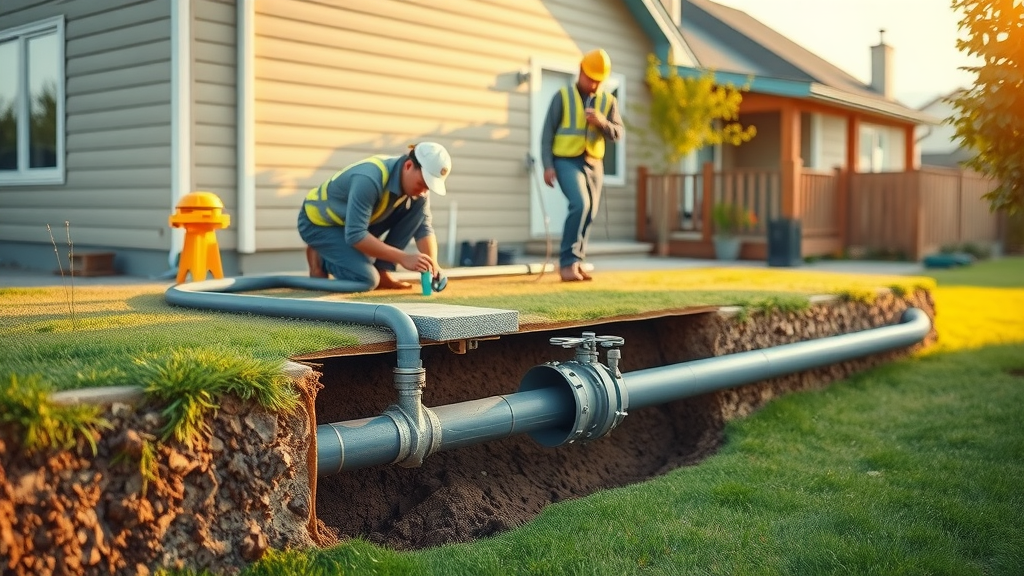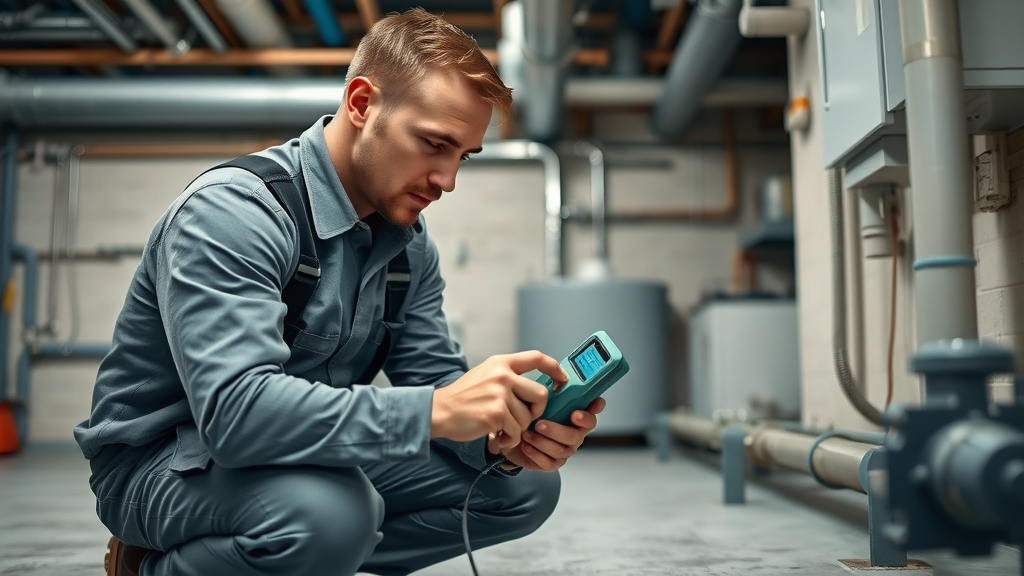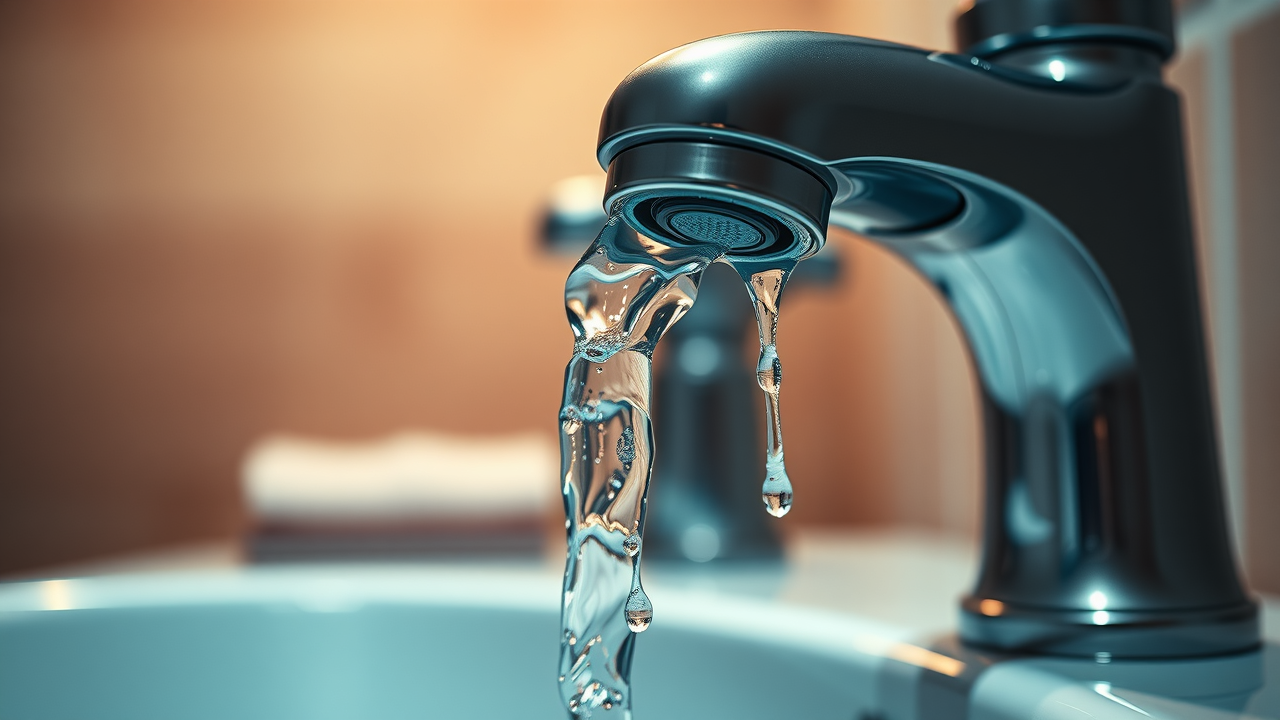Did you know that over 4,200 home fires each year are caused by natural gas accidents involving residential gas lines? That's a sobering statistic—one that puts the spotlight on just how vital prompt, expert residential gas line repair is for every homeowner. Gas line issues aren’t just inconvenient—they’re dangerous, potentially fatal, and demand fast, professional attention. If you’re unsure how to recognize warning signs, what repair actually involves, or how much to budget, you’re in the right place. This comprehensive guide arms you with industry insights, safety musts, and actionable tips—so you can regain peace of mind and protect your home.
Why Residential Gas Line Repair Matters: The Hidden Dangers in Your Home
Your natural gas system is essential for heating, cooking, and powering appliances, but it’s also one of the most sensitive elements of your house. A damaged or neglected gas line can turn from an invisible asset into an imminent hazard—think gas leaks, explosions, poisoning, and even structural fires. Most homeowners aren’t fully aware just how extensive the risks can be. Old or corroded gas pipes, improperly installed lines, or damage from landscaping and home renovations all pose immediate threats.
Even in modern homes, hidden issues in your home gas line can result in undetected leaks, endangering both your family and your property value. It's crucial to prioritize gas line repair and routine inspection—not just for safety, but for long-term peace of mind. Proactive care prevents costly emergencies and ensures all gas appliances and fixtures run optimally, without fear of a devastating gas leak or fire. Immediate attention and prompt repair literally save lives, turning an overlooked system into a reliably safe resource for your family.
Startling Statistics: Residential Gas Line Incidents and their Impact
Gas-related emergencies at home are more common—and more dangerous—than you might think. The National Fire Protection Association recently reported that natural gas line accidents contribute to more than 4,200 annual home structure fires. These incur millions in property losses and lead to hundreds of civilian injuries every year. With home construction trends showing more amenities powered by natural gas, the importance of detecting line problems before they escalate has never been more pressing.
Even a small gas leak can escalate rapidly; unaddressed, it can trigger a chain reaction that puts both lives and investments at serious risk. For homeowners, understanding this means treating strange smells, dead landscaping, or faulty appliances as red flags—triggers to call a licensed plumbing service immediately. Statistics clearly show that most catastrophic events could have been avoided with timely gas pipe repair.
“According to the National Fire Protection Association, more than 4,200 home structure fires per year are caused by natural gas-related incidents, underscoring the urgent need for proper residential gas line repair.”
What You’ll Learn: Navigating Residential Gas Line Repair
- How to identify common signs of gas line problems
- The process and importance of professional gas line repair
- Cost factors and what impacts pricing
- Your legal responsibilities as a homeowner
- When to repair or replace your gas lines
Understanding Residential Gas Line Repair: Basics Every Homeowner Should Know
Having a basic understanding of residential gas line repair will empower you as a homeowner. Gas lines are the crucial pipes that channel natural gas or propane to your range, water heater, fireplace, or furnace. Over time, even well-installed gas lines may need maintenance due to normal wear, corrosion, physical impacts, or shifting ground. When a leak or fault is suspected, prompt action is critical to mitigate risk and avoid more expensive line repairs or entire system replacement down the line.
Proactive homeowners know that regular inspection is the first line of defense. Staying aware of the condition of your home gas system ensures that even minor problems—like flaky pipe joints or subtle rust—won’t go unnoticed. The repair process itself is complex and must always be performed by a licensed technician who understands local building codes and has the proper equipment for accurate diagnostics. With professional support, you minimize danger and maximize the long-term reliability of your household’s energy infrastructure.
What is a Residential Gas Line and How Does Gas Line Repair Work?
A residential gas line is the network of pipes that distributes gas from your utility’s main supply into your home. Most American homes rely on either natural gas or propane, delivered through heavy-duty steel, copper, or modern flexible piping. When you schedule gas line repair, the first task for any technician is a thorough inspection—checking for visible damage, testing air pressure, and using sensitive detectors to find leaks you can’t see or smell.
Repairs typically start with shutting off the gas supply and venting the area, followed by the safe removal and replacement of damaged pipe sections or faulty connectors. The latest gas line repair techniques use advanced materials and pressurized testing to guarantee airtight reliability after repair. In many cases, targeted pipe repair is sufficient. However, if repeated leaks, age, or corroded lines are present, your expert may recommend full pipe replacement to guarantee long-term safety. Always trust a professional for both diagnosis and solution—your family’s safety is on the line.

Types of Gas Lines: Natural Gas, Propane, and Flexible Gas Pipe
Understanding the types of gas lines can help you make informed repair or replacement decisions. Most homes are outfitted with rigid black steel pipes for natural gas, prized for strength and durability, or sometimes copper lines for propane delivery. Increasingly, new installations use flexible gas pipe (often called CSST)—favored for its efficiency and ease of routing through walls and tight spaces.
Each type of gas pipe comes with its own repair and maintenance needs. Black steel lines can rust or corrode at connections. Copper can degrade due to chemical interactions with certain soils or water. Flexible gas pipes generally resist corrosion but require special fittings and proper electrical bonding to prevent arc damage. Your repair technician will assess your home’s line type, installation age, and overall condition before recommending the safest, most cost-effective line repair or replacement strategy.
Common Signs You Need Residential Gas Line Repair
Spotting trouble early can prevent emergencies—and big repair bills. Homeowners should watch for common signsthat signal a need for urgent residential gas line repair. These warnings can appear suddenly or develop over time, but none should ever be ignored. If you notice even one sign, act fast.
- Detecting a gas leak: Sulfur or rotten egg smell
- Unexpected rise in gas bills
- Hissing sounds near gas lines
- Dead plants around gas line installations
- Malfunctioning appliances like a water heater
A distinct rotten egg or sulfur smell almost always signals a gas leak and requires immediate evacuation and expert help. Unusually high gas bills can mean a slow, sustained leak is draining your system and wasting fuel. Hissing, whistling, or a faint pressure noise from pipes should be investigated at once. Dead spots in landscaping or plants near buried gas pipes may signal an underground leak. Lastly, if gas appliances such as your water heater, range, or dryer fail to ignite or run poorly, the gas line may need professional assessment and repair. Prompt action keeps small problems from ballooning into life-threatening disasters.
Gas Line Repair: Step-by-Step Process from Diagnosis to Solution
The process of gas line repair unfolds step by step—from initial diagnosis to final safety check. When you call a professional for a suspected leak, the technician starts by shutting off the gas main and identifying problem areas with specialized detectors. Next, a thorough inspection maps out the line’s route, checking all joints, flex connections, and shut-off valves. If leaks or damage are found, the line is depressurized, and repairs or replacement sections are installed. Once work is complete, the entire line is retested for integrity and pressure before the gas supply is restored.
Reputable contractors always follow up with a post-repair inspection to confirm compliance with city or county codes. This ensures the repaired gas system is fully operational and safe to use for your water heater, furnace, or stove. At every step, technicians take precautions to minimize disruption and keep your household protected—handling every detail so you don’t have to worry about recurring problems or unexpected hazards.

Leak Detection and Testing Procedures in Gas Line Repair
Leak detection in residential gas line repair relies on a blend of science and technology. Experts routinely use sensitive electronic sniffers capable of detecting even minute gas concentrations—far beneath human detection thresholds. Where visual cues aren’t obvious, soapy water tests reveal bubbling at connections and joints. Technicians may also use thermal imaging, air pressure monitoring, or vacuum tests to pinpoint hard-to-find leaks in buried or wall-concealed pipes.
Testing doesn’t stop after the repair. After correcting a leak, professionals re-pressurize the line and monitor it with digital gauges and detectors for at least 15 minutes—sometimes longer. In some municipalities, code requires an official building inspection before reconnection to ensure there are no hidden threats. These best practices guarantee your gas lines remain leak-free, your home is safe, and all repaired connections are up to code.
Residential Gas Line Repair vs. Full Line Replacement
Not all gas line problems demand a full replacement; sometimes, targeted repair is the safest and most economical solution. For example, small leaks at a single fitting or a corroded section can typically be fixed with a simple splice or connector swap. If multiple leaks crop up or if your line is decades old, however, a professional may recommend replacing the entire pipe to prevent recurring issues and to upgrade your system to modern safety standards.
A key factor in deciding between repair or replace is longevity. Repaired sections might last several years, but a new, properly installed line will serve your home for decades with minimal maintenance. Cost, safety, and compliance with codes all influence this choice. A good technician will walk you through the options, weighing short-term savings against long-term value and risk.
Safety Protocols in Residential Gas Line Repair Jobs
Safety is non-negotiable during any gas line repair. Certified professionals take numerous steps: shutting off gas at the main, ventilating the workspace, donning protective gear, and using only approved, non-sparking tools. They isolate faulty lines before starting work and block ignition sources nearby (such as open flames and electrical equipment).
For larger jobs or those in confined spaces, technicians may implement additional measures—like atmospheric monitoring, specialized ventilation fans, or backup alarms. After completion, lines are checked for leaks, pressure-tested, and regional documentation is filed as needed. Homeowners should never attempt DIY repairs: the risk of explosion, poisoning, or costly damage is simply too high. Always trust a qualified expert to deliver safe, compliant workmanship.
Comparison Table: Repair vs. Replace for Residential Gas Lines
Residential Gas Line Repair Cost: Breaking Down the Expenses
Budgeting for residential gas line repair means understanding both the typical range and the variables that influence price. While minor repairs—such as replacing a short pipe or mending a connector—are affordable for most homeowners, more extensive jobs, rerouting, or code upgrades can quickly increase the bill. Getting an accurate quote requires a thorough, in-person assessment by a reputable technician.
It’s important to remember that skimping on cost by hiring an unlicensed provider, or worse, going DIY, puts your insurance and legal status at risk—not to mention your safety. Professional repairs not only guarantee safer outcomes, but also ensure that inspections and permits are correctly filed, avoiding problems if you ever sell your home or need to make an insurance claim.
Factors Affecting Gas Line Repair Cost
Several elements determine what you’ll pay for gas line repair. First, extent of damage—a small leak or isolated break costs far less to fix than a system-wide failure or extensive corrosion. Location is key: lines buried beneath concrete, in crawl spaces, or inside finished walls may require significant labor and extra materials. Pipe material(steel, copper, flexible plastic) can also impact supply cost and labor time.
Other influences include local permit fees, the need for emergency service or after-hours work, and whether additional repairs—such as wall restoration or landscaping—are involved. In some cities, strict building codes may require upgraded lines or more extensive testing after repair. All these factors combine to create a range, but you should always get a detailed estimate up front and only work with insured, licensed pros for any repair gas line project.
Estimate Ranges: Residential Gas Line Repair Cost by Project Size
So, what can you expect to pay? For most homeowners, a simple residential gas line repair costs between $150 and $700. This covers the common jobs—like patching a small hole, swapping fittings, or fixing a short exterior segment. More complex projects, such as rerouting lines around renovations or replacing aging pipes inside walls, may run from $1,000 to $5,000 or more.
These quotes include labor, materials, basic permits, and post-repair inspections. Emergency jobs, additional appliance hookups, or upgrades to meet new codes may carry a premium. Always clarify scope, hourly rates, and warranty period with your plumbing service before work begins—reputable providers are transparent and willing to put quotes in writing.
“The average gas line repair cost can range between $150 and $700, depending on the extent of damage and location.” – Industry Expert
Residential Gas Line Services: Choosing a Qualified Professional
When you need gas line repair, choosing the right service provider is essential to ensure lasting safety and code compliance. Only a licensed plumber or certified gas technician has the training, equipment, and legal authority to work on your home gas system. These professionals understand the city and state requirements for testing, inspection, and documentation—so you never have to worry about the job being “up to code.”
Key advantages of working with vetted, experienced pros include reliable customer service, 24/7 response for emergencies, and the peace of mind that comes with warranties and insurance-backed workmanship. Hiring the cheapest or most convenient contractor can backfire—unlicensed work often voids warranties, leads to dangerous mistakes, or triggers legal issues with insurance and local government.
Why Professional Gas Line Services Ensure Safety and Code Compliance
Choosing professional gas line services means you’re prioritizing your family’s safety and legal peace of mind. Legally, nearly all US jurisdictions require anyone performing gas line installation or repair to be certified—both to safeguard your property and protect first responders in case of an emergency. Pros adhere to strict protocols, including pressure testing, leak checks, and post-repair documentation.
Professional services also offer robust liability insurance, covering the rare but costly possibility of post-repair leaks or failures. This protects your investment in home value, guarantees repairs won’t void your warranty, and ensures all work aligns with the latest safety codes. Most importantly, your gas lines will function reliably for years to come—so you never lose sleep over a hidden hazard.
How to Vet a Gas Line Repair Company: Certifications and Reviews
Vetting a gas line repair provider isn’t just about price—it’s about verifying qualifications, company history, and customer reputation. Here’s what to look for:
- Licensed and insured plumbing service
- BBB accredited
- 24/7 emergency response
- Transparent pricing for gas line services
- Experience with gas leaks and repairs
Always ask to see credentials and insurance documentation. Read online reviews for clues about reliability, professionalism, and customer service—legitimate providers encourage feedback and willingly share testimonials. Confirm that the contractor offers comprehensive line repairs and appliance hookups, not just basic fixes, and ask about service warranties before agreeing to work.
People Also Ask: Residential Gas Line Repair FAQs
Who do you call to fix a gas line in your house?
Answer: Always contact a licensed plumbing service or certified gas line repair technician. They have the expertise and equipment to safely address issues with residential gas lines and comply with local regulations.
How much does it cost to have a gas line repaired?
Answer: The cost for residential gas line repair varies based on damage severity, pipe location, and local rates, but typically ranges from $150 to $700.
Does homeowners insurance cover gas line repairs?
Answer: Most standard homeowner’s insurance policies do not cover residential gas line repair due to age or wear, but might cover sudden damage resulting from covered perils. Check your policy for specifics.
Is it illegal to repair a gas line yourself?
Answer: In most jurisdictions, only licensed professionals may perform residential gas line repair or installation. DIY work is dangerous and often illegal, carrying steep penalties and significant risk.
Key Takeaways on Residential Gas Line Repair
- Never ignore common signs of a gas line problem
- Always trust a certified professional for repairs
- Understand the factors influencing repair cost
- Taking quick action prevents greater risks
FAQs: Additional Questions on Residential Gas Line Repair
- How long do residential gas lines typically last?
- What should I do if I suspect a gas leak?
- Can a gas line be rerouted instead of repaired?
Need Emergency Residential Gas Line Repair? Contact Us Now
Call us today if you are experienceing a plumbing emergency - 714-290-7401
Conclusion: Early detection, swift action, and professional repair keep your home safe and energy running smoothly.
Sources
- https://www.nfpa.org – Example Site
- https://www.homeadvisor.com/cost/plumbing/repair-a-gas-pipe/ – Example Site
- https://www.energy.gov/energysaver/heat-and-cool/home-heating-systems/natural-gas-heating-systems – Example Site
- https://www.thisoldhouse.com/plumbing/reviews/gas-line-repair-cost – Example Site

